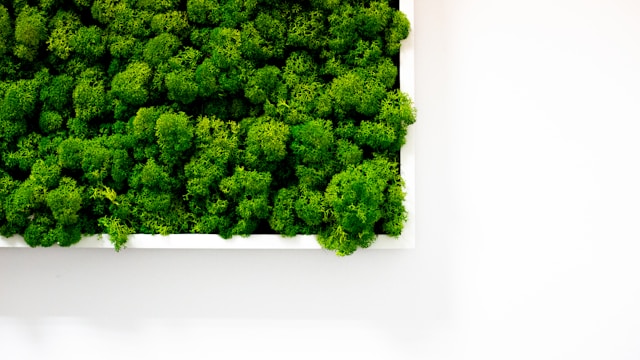
In recent years, the concept of green homes has shifted from niche interest to a central pillar of real estate innovation. With rising concerns about climate change, energy efficiency, and environmental impact, both homeowners and developers are prioritizing sustainability like never before. From solar energy integration to smart water management, green homes now incorporate a wide array of eco-friendly features that not only reduce environmental footprints but also boost property value.
The evolution of green homes is not merely a trend—it is a revolution that’s redefining how we live, build, and invest in the future of our planet. This article explores the most significant sustainable features trending in the real estate market and why they matter more than ever.
Smart Energy Systems Powering the Future
One of the most powerful shifts in green home development is the widespread adoption of renewable energy systems. Solar panels are leading the way, enabling homeowners to produce their own electricity, cut utility bills, and even earn credits through net metering. In regions with strong sun exposure, such as California or Arizona, solar-powered homes have become not just desirable, but expected.
Battery storage systems like Tesla Powerwall allow homes to store energy for use during outages or peak-demand hours. Meanwhile, energy-efficient HVAC units, programmable thermostats, and Energy Star-certified appliances are now standard in new sustainable builds. These systems are complemented by smart home technologies that monitor and control energy use remotely, maximizing both comfort and efficiency.
The drive toward net-zero homes—buildings that produce as much energy as they consume—is gaining momentum. These homes are not only environmentally responsible but also represent long-term cost savings and independence from volatile energy markets.
Sustainable Materials and Eco-Friendly Construction
The foundation of any green home lies in its materials and construction practices. Builders are now embracing low-impact and recycled materials that offer durability with minimal ecological harm. Bamboo flooring, reclaimed wood, recycled metal, and non-toxic insulation materials are replacing traditional, carbon-heavy options.
In addition, modular and prefabricated homes are gaining popularity as they produce less waste and often use sustainable components more efficiently. The building process for green homes often includes advanced framing techniques, which reduce the amount of lumber required while improving thermal insulation.
Low-VOC paints and sealants are now a must-have, promoting healthier indoor air quality by reducing the emission of harmful chemicals. These choices are not only better for the environment but also for the long-term health of occupants—a growing concern among today’s eco-conscious buyers.
Water Conservation and Landscape Integration
While energy gets much of the spotlight, water efficiency is just as critical in sustainable home design. Modern green homes now include features such as low-flow toilets, faucets, and showerheads that significantly reduce water usage. Greywater recycling systems, which reuse water from sinks and laundry for irrigation, are becoming more common in drought-prone areas.
Rainwater harvesting systems are also trending, allowing homeowners to collect and store rain for garden and landscape use. Drip irrigation systems, xeriscaping, and the use of native plants minimize water requirements while still offering beautiful, functional outdoor spaces.
These innovations not only contribute to a more sustainable water cycle but also reduce municipal water demand and lower utility costs. For homeowners, this means aligning sustainability with economic practicality.
The Rise of Health-Conscious Indoor Environments
Beyond saving energy and resources, green homes are now being designed with human health in mind. Indoor air quality, lighting, and thermal comfort have become key elements of sustainable living. Air filtration systems that remove allergens, pollutants, and volatile organic compounds are increasingly built into HVAC designs.
Natural lighting is emphasized through strategic window placement and skylights, reducing reliance on artificial lighting and supporting circadian health. Many green homes now incorporate biophilic design elements, connecting occupants with nature through views, plant walls, and organic shapes.
In addition to materials and design, advanced monitoring systems track indoor environmental quality, helping homeowners maintain optimal living conditions. These health-focused features align perfectly with modern wellness trends and offer a holistic approach to sustainability that benefits both people and the planet.
Why Green Homes Are a Smart Investment
The rise in green homes is not solely about environmental responsibility—it’s also about financial wisdom. Studies consistently show that homes with sustainable features command higher resale values and sell faster than traditional counterparts. As more cities and countries implement stricter building codes and offer incentives for energy efficiency, green homes are positioned as the future standard, not a luxury.
Tax incentives, rebates, and energy credits provide tangible financial benefits for eco-friendly upgrades. Moreover, lower operational costs and improved durability of materials contribute to long-term savings. For investors and developers, focusing on sustainability is becoming a necessary strategy for staying competitive in an evolving market.
With millennials and Gen Z placing high importance on environmental stewardship, green features are also a powerful marketing tool in attracting future buyers. These generations view homeownership not just as a personal milestone, but also as a reflection of values—and green homes deliver on both fronts.
Building Toward a Greener Tomorrow
The evolution of green homes reflects a deeper societal shift toward environmental responsibility, innovation, and conscious living. What began as a movement of early adopters has now become a mainstream demand, driven by climate awareness, technological advancement, and economic practicality.
From solar panels to smart thermostats, from sustainable materials to wellness-focused designs, green homes embody the future of real estate. As builders, homeowners, and investors align with these priorities, the landscape of modern housing will continue to evolve—not just in how it looks, but in how it impacts the world around us.
For those planning a new home or seeking to invest in real estate, embracing the green revolution is more than a trend—it’s a commitment to sustainability, efficiency, and a healthier way of living.